History
The History Behind Kamala Harris’s ‘Freedom’ Campaign Theme
Vice President Kamala Harris will officially accept her party's nomination for president on Thursday night in Chicago. Her speech to the Democratic National Convention will almost certainly continue to position her candidacy as a forward-looking fight for freedom. Many of the week's speakers have emphasized this theme, and it was the focus of Wednesday night's convention events.
The Vice President — who uses Beyoncé’s “Freedom” as her campaign anthem — promises to "fight for a future where we defend our most basic freedoms," including protecting and promoting the freedom to vote, freedom from gun violence, freedom from hate, economic freedom, and reproductive freedom. Harris's campaign for freedom has generated enormous enthusiasm and helped Democrats to reset the Presidential race over the last month.
This focus makes sense. Harris’s time on the national stage has been marked by constitutional retrenchment and contracting rights, especially for women after the 2022 Supreme Court Dobbs decision that overturned Roe v. Wade and eliminated the constitutional right to have an abortion. It is tempting to view Harris’s emphasis on expansive freedom as a way to pivot in the abortion debate away from the more historically divisive term “choice.”
But this theme is about much more than the abortion war. Harris is drawing on a lengthy tradition in which American women — especially women of color — have confronted political turmoil and efforts to constrict their rights and liberties by mounting future-focused campaigns centered on the expansion of freedom. These activists often embraced far-reaching agendas unlikely to be achieved in their time — and, in fact, most of them never lived long enough to enjoy the freedoms they promoted. Harris, however, is well positioned to change that historical trend.
History shows that in times of crisis, we witness some of Americans’ most imaginative thinking about the possibilities of democracy.
Consider the broad-based freedom campaigns women launched in the 1920s. The states ratified the 19th Amendment granting women the constitutional right to vote in 1920. This expansion of rights came in an otherwise conservative era when courts and legislatures across the nation were restricting civil rights and liberties. Entrenched legal segregation, a red scare, and new immigration restrictions were coupled with constricted reproductive freedom. Abortion remained illegal, the 1873 Comstock Law that banned birth control was still on the books, and in 1927, in Buck v. Bell, the Supreme Court legalized forced sterilization.
Read More: History Suggests the Memes Might Actually Help Kamala Harris Win
Instead of retreating, however, many women undertook a multi-issue approach to expanding freedom for women — and all Americans. They knew that if they maintained a narrow focus on any one threat to liberty, they would remain oppressed on other fronts. That could mean, for example, that they gained rights as women, only to be unable to exercise them because of racial or economic barriers. That understanding is what we now call intersectionality.
The ideal political citizen remained — as it had since the nation’s Founding — a white, heterosexual, Protestant man of economic means. As a result, after the 19th Amendment passed, the era’s Jim Crow system in the South especially stacked the odds against women of color and poor women. Oppressed on several fronts, they struggled to surmount obstacles like poll taxes and vote — though not for lack of trying to get to the polls.
With few exceptions, the women who could vote, who were mainly white, were unable to translate voting power into political power. Almost all of the women who won elective office in the 1920s were the widows or daughters of men who had passed away during their terms — mere placeholders until suitable male replacements came forward, a trend that would continue for another four decades.
In that climate, some women also learned that their marital status could nullify their right to vote because the 1907 Expatriation Act had linked women’s citizenship status to that of their husbands. This meant that if a woman who was a U.S. citizen married a non-citizen, she lost her citizenship and therefore was ineligible to exercise her new voting rights.
Advocating for independent citizenship status for women became a next frontier for some American feminists like Crystal Eastman, who was married to a British man. But Eastman, a journalist and lawyer who co-founded the American Civil Liberties Union, did not narrowly focus on citizenship rights for the wives of immigrants.
Instead, she advocated for freedom and opportunity for all. As she wrote in an editorial in 1920: “[W]hat [women] are after, in common with all the rest of the struggling world, is freedom,” which she envisioned as “a large word.” As a feminist and socialist, she believed in a future in which “the workers’ battle for industrial freedom” was tied to women’s emancipation, including better workplace conditions and equal pay — along with support in family planning, housework, and childrearing, so women’s career and educational advancement could be realized.
With xenophobia on the rise in the 1920s, the results of this advocacy were mixed. Women won a partial victory with the Cable Act of 1922, which allowed some married women like Eastman to retain their citizenship and exercise their new right to vote. But this was only possible because her foreign husband was from a nation where immigrants were eligible for U.S. citizenship —unlike those with husbands from countries like China, where the Chinese Exclusion Act of 1882 barred citizenship. Seeing the wives of certain immigrants remain unable to vote only underscored the need to fight for freedom on many fronts. In this case, that meant rights for both women and immigrants.
This is something that women of color have always understood, because of their multilayered identities and experiences of oppression. The case of Indigenous women offers an example of that reality. The 19th Amendment didn’t grant them the right to vote. Instead, they had to wait four more years for the passage of the 1924 Indian Citizenship Act. Even with citizenship, however, some states disqualified Native people from voting because they did not pay taxes, own property, or were under the guardianship of the federal government. For this reason, Indigenous activist and former suffragist Laura Cornelius Kellogg of the Oneida Nation — who wrote Our Democracy and the American Indian in 1920 — spent much of the decade working for freedom on several fronts, including supporting land rights for Haudenosaunee people and reestablishing matriarchal governance at Oneida.
Read More: Exclusive: How Harris Is Pivoting From Biden’s Campaign Message
Black women were also on the forefront of these expansive calls for freedom. The National Association of Colored Women (NACW) had been formed in 1896 as the Jim Crow regime was being cemented into place — not merely to help Black women, but as their motto expressed, “for the benefit of all humanity.” By the 1920s, activist and educator Mary McLeod Bethune was the head of the NACW, living up to that motto by fighting for various freedoms, including more inclusive voting rights, healthcare access, and representation in government. Her efforts ultimately helped create the “Black Cabinet” of advisors to President Franklin D. Roosevelt in the 1930s. She also served in his administration as head of the new Office of Minority Affairs in the National Youth Administration.
There were countless other examples of women who advocated for freedom for themselves — and others — for decades beyond the 1920s. They organized at the grassroots in religious, educational, civic, and cultural associations outside of the electoral arena, where they held little power. Their tireless work eventually helped propel the “rights revolution” of the 1960s and 1970s that produced legislation such as the 1964 Civil Rights Act, 1965 Voting Rights Act, and a groundswell of legal rights for women.
Their activism helped convince more women by the end of the 1960s to run for elected office as change candidates, upending the “widow track” and slowly getting us to where we are today — with women comprising about a quarter of the U.S. Congress, holding 12 governorships, and the vice presidency.
Kamala Harris’s historic presidential campaign stands on this History.

Given her opponent’s attacks and recent setbacks by the Court, Harris’s future-oriented focus is a very smart, transactional form of politics — one that transforms freedom from a conservative hands-off posture into an expansive, inclusive, and forward-thinking concept. As she exhorts crowds to repeat: “We are not going back!”
But, like so many women before her, Harris’s appeals also are aspirational, with the promise of taking a more all-encompassing, centuries’ old brand of politics pioneered by women at the margins directly into the center of American political power — where, as president, some of the freedoms she calls for might finally be realized.
Stacie Taranto is an associate professor of History at Ramapo College of New Jersey and author of, Kitchen Table Politics: Conservative Women and Family Values in New York (University of Pennsylvania Press, 2017). She is co-editor of Suffrage at 100: Women in American Politics Since 1920. She is an associate editor of Made By History. Leandra Zarnow is an associate professor of History at University of Houston and author of, Battling Bella: The Protest Politics of Bella Abzug (Harvard University, 2019). She is co-editor of Suffrage at 100: Women in American Politics Since 1920. She also co-directs the digital humanities project,Sharing Stories from 1977: Putting the National Women’s Conference of the Map.
Made by History takes readers beyond the headlines with articles written and edited by professional historians. Learn more about Made by History at TIME here. Opinions expressed do not necessarily reflect the views of TIME editors.
-

 History1d ago
History1d agoHow Celebrities Changed America’s Postpartum Depression Narrative
-
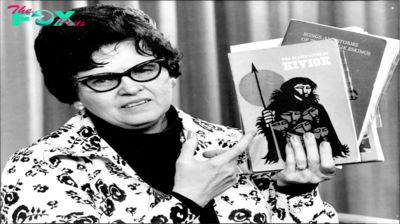
 History2d ago
History2d agoThe Woman Whose Crusade Gave Today’s Book-Banning Moms a Blueprint
-
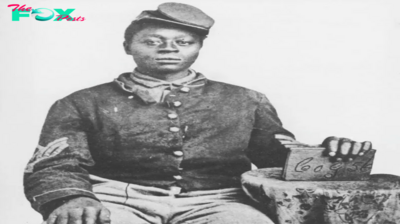
 History6d ago
History6d agoHow Black Civil War Patriots Should Be Remembered This Veterans Day
-
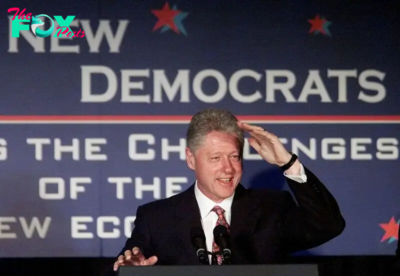
 History1w ago
History1w agoThe Democratic Party Realignment That Empowered Trump
-
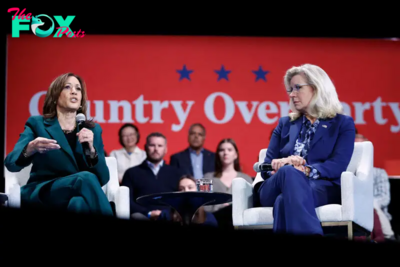
 History1w ago
History1w agoWhy People Should Stop Comparing the U.S. to Weimar Germany
-
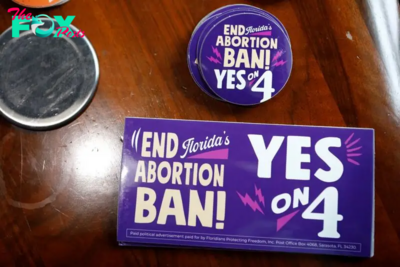
 History1w ago
History1w agoFlorida’s History Shows That Crossing Voters on Abortion Has Consequences
-

 History1w ago
History1w agoThe 1994 Campaign that Anticipated Trump’s Immigration Stance
-
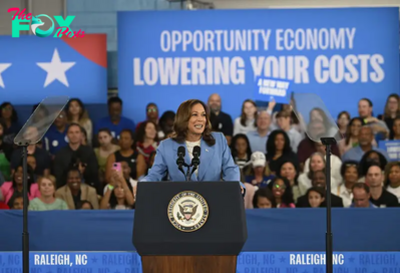
 History1w ago
History1w agoThe Kamala Harris ‘Opportunity Agenda for Black Men’ Might Be Good Politics, But History Reveals It Has Flaws

















